A Conversation with Bruce Duffie
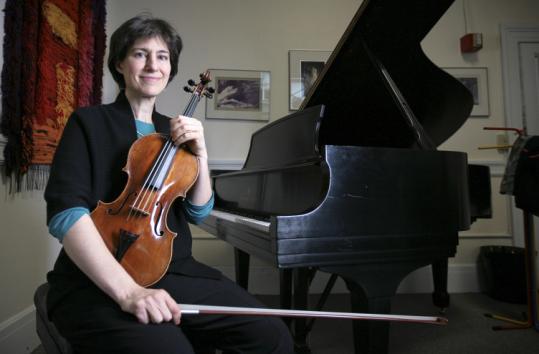

| Grammy-nominated violist Kim
Kashkashian has established herself as one of the most accomplished artists
of her generation. She has been hailed by the San Francisco Chronicle as
“an artist who combines a probing, restless musical intellect with enormous
beauty of tone.” The New York Times has joined in these accolades, praising
her “rich, mellow timbre and impressive artistry.” In recent seasons, she
has appeared as soloist with the major orchestras in New York, Berlin, Vienna,
London, Milan, Munich and Tokyo, and has performed recitals in Boston, New
York, Washington, D.C. and many more cities throughout the United States.
Fueling her passion for contemporary music, Ms. Kashkashian has developed
close relationships with such composers as Gubaidulina, Penderecki, Kancheli,
Kurtág, Mansuriän, Pärt, Berio and Eotvos, performing their
existing works and commissioning new ones to expand the viola repertoire.
Kashkashian also teaches at New England Conservatory, working with young
violists and coaching chamber music ensembles. |
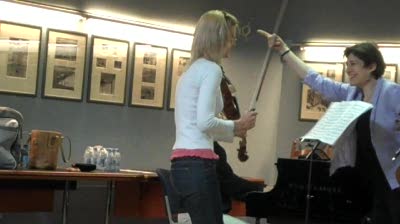 KK: There are cases of people who were great teachers
who did not perform. In this country, the example that comes to mind
is Galamian, who really did not perform, but nurtured some of the great violinists
of the last generation and this one. However, for me — and
I think for many of my colleagues — teaching and performing
do feed on each other. What I learn on the stage, I give in the classroom,
in the studio. And what I formulate in the studio can help me to focus,
in a different way, onstage also. So for me, it’s very important to
be doing both simultaneously.
KK: There are cases of people who were great teachers
who did not perform. In this country, the example that comes to mind
is Galamian, who really did not perform, but nurtured some of the great violinists
of the last generation and this one. However, for me — and
I think for many of my colleagues — teaching and performing
do feed on each other. What I learn on the stage, I give in the classroom,
in the studio. And what I formulate in the studio can help me to focus,
in a different way, onstage also. So for me, it’s very important to
be doing both simultaneously.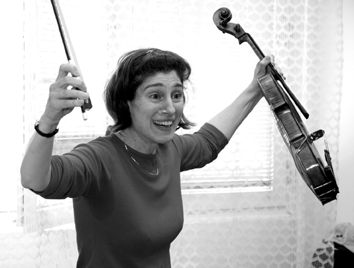 BD: And give that instrument to someone of lesser
talent at the moment, and let them build up on it?
BD: And give that instrument to someone of lesser
talent at the moment, and let them build up on it?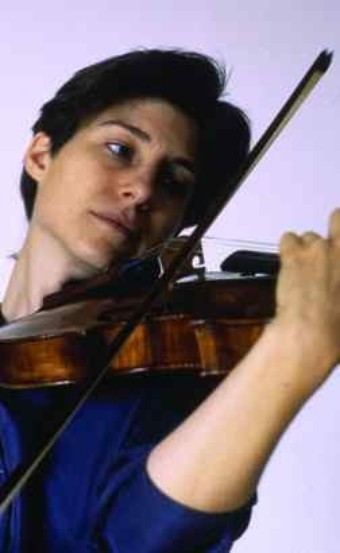 KK: There might be more reason to adapt bassoon
concerti or clarinet concerti, or concerti with a similar range... or even
possibly a cello concerto, where at least it would be one octave adjustment,
and not necessarily squashing the range, as you’d have to do when you took
a violin concerto.
KK: There might be more reason to adapt bassoon
concerti or clarinet concerti, or concerti with a similar range... or even
possibly a cello concerto, where at least it would be one octave adjustment,
and not necessarily squashing the range, as you’d have to do when you took
a violin concerto.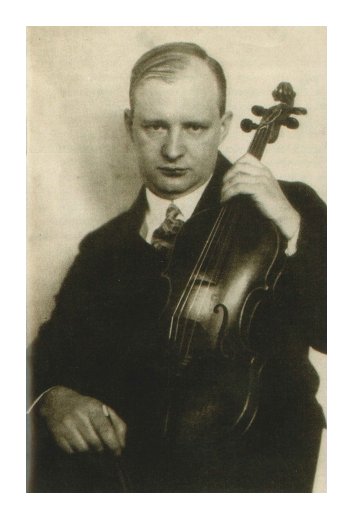 BD: Is the Hindemith an addendum to the solo sonatas,
or is it a completely separate piece?
BD: Is the Hindemith an addendum to the solo sonatas,
or is it a completely separate piece?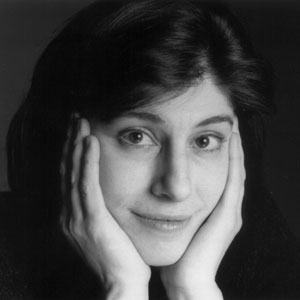 BD: Do you like being a wandering minstrel?
BD: Do you like being a wandering minstrel?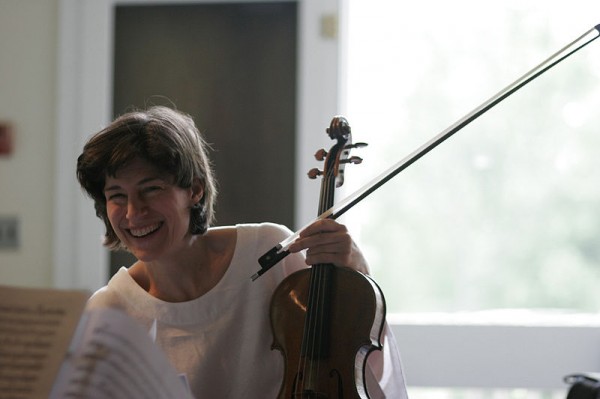 KK: Sometimes. It can be, if everything is
flowing. If the music and the imagination and the physical flow are
all working together, then it can be very joyful. But it isn’t always.
Those things don’t always come together, and then you fall back on your hard
work — if you’ve got enough of that background and
hard work! Nevertheless, it can be a good experience for the listener
even if you’re not having that ultimate pleasure yourself.
KK: Sometimes. It can be, if everything is
flowing. If the music and the imagination and the physical flow are
all working together, then it can be very joyful. But it isn’t always.
Those things don’t always come together, and then you fall back on your hard
work — if you’ve got enough of that background and
hard work! Nevertheless, it can be a good experience for the listener
even if you’re not having that ultimate pleasure yourself.Kim Kashkashian was born in Detroit,
Michigan to Armenian parents. Her studies were at the Peabody Conservatory
in Baltimore with Walter Trampler and Karen Tuttle, and at the Marlboro Music
Festival where she worked intensively with Felix Galimir.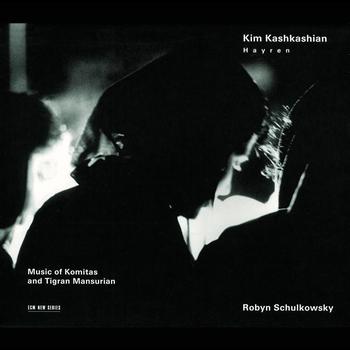 After experiencing unanticipated successes at the Tertis and Munich competitions,
Kim Kashkashian appeared as soloist with the major orchestras of Chicago,
Cleveland, Berlin, Milan, London, Tokyo and Vienna, working with conductors
including Nikolaus Harnoncourt, Zubin Mehta, Riccardo Muti, Christoph Eschenbach,
Dennis Russell Davies and Franz Welser-Möst. She has performed in recital
in New York, San Francisco, Cleveland, Philadelphia, Vienna, Berlin, Paris,
London and Amsterdam, as well as in the chamber music centers of Salzburg,
Verbier and Ravinia.
After experiencing unanticipated successes at the Tertis and Munich competitions,
Kim Kashkashian appeared as soloist with the major orchestras of Chicago,
Cleveland, Berlin, Milan, London, Tokyo and Vienna, working with conductors
including Nikolaus Harnoncourt, Zubin Mehta, Riccardo Muti, Christoph Eschenbach,
Dennis Russell Davies and Franz Welser-Möst. She has performed in recital
in New York, San Francisco, Cleveland, Philadelphia, Vienna, Berlin, Paris,
London and Amsterdam, as well as in the chamber music centers of Salzburg,
Verbier and Ravinia.Kim Kashkashian's quest for new directions and forms of music making is an active element of her musical life. Her work with György Kurtág, Tigran Mansurian, Betty Olivero, Giya Kancheli, Krzysztof Penderecki, Ken Ueno and Peter Eötvös has extensively enriched the repertoire for viola. Ms. Kashkashian has collaborated with the Tokyo, Guarneri and Orion quartets and toured with a unique quartet which included Daniel Phillips, Gidon Kremer and Yo Yo Ma. Current partnerships include duos with Robert Levin and with percussionist Robyn Schulkowsky. After early recordings of Mozart's Sinfonia Concertante and Divertimento with DGG and Sony, a long term relationship with ECM Records has created an extensive discography which includes the award winning Brahms sonatas, the complete Hindemith sonatas, the concertos of Bartók, Eötvös, Kurtág, Berio, Kancheli, Olivero and Mansurian, the Bach Sonatas for viola da gamba (with Keith Jarrett), Hayren (music of Tigran Mansurian and Komitas) and Asturiana, songs from Spain and Argentina. Kim Kashkashian has always included teaching into her musical activities, and has been associated with the Bloomington School of Music, the Hochschule of both Berlin and Freiburg, Germany and is presently teaching chamber music and viola at the New England Conservatory of Music in Boston where she has made her home. She plays a viola by Peter Greiner. |
This interview was recorded in Chicago on July 16, 1993. Portions
(along with recordings) were used on WNIB in 1996 and in 1997, and it was
also used on WNUR in 2003 and 2010. This transcription was made and
posted on this website in 2010.
To see a full list (with links) of interviews which have been transcribed and posted on this website, click here. To read my thoughts on editing these interviews for print, as well as a few other interesting observations, click here.
Award - winning broadcaster Bruce Duffie was with WNIB, Classical 97 in Chicago from 1975 until its final moment as a classical station in February of 2001. His interviews have also appeared in various magazines and journals since 1980, and he now continues his broadcast series on WNUR-FM, as well as on Contemporary Classical Internet Radio.
You are invited to visit his website for more information about his work, including selected transcripts of other interviews, plus a full list of his guests. He would also like to call your attention to the photos and information about his grandfather, who was a pioneer in the automotive field more than a century ago. You may also send him E-Mail with comments, questions and suggestions.